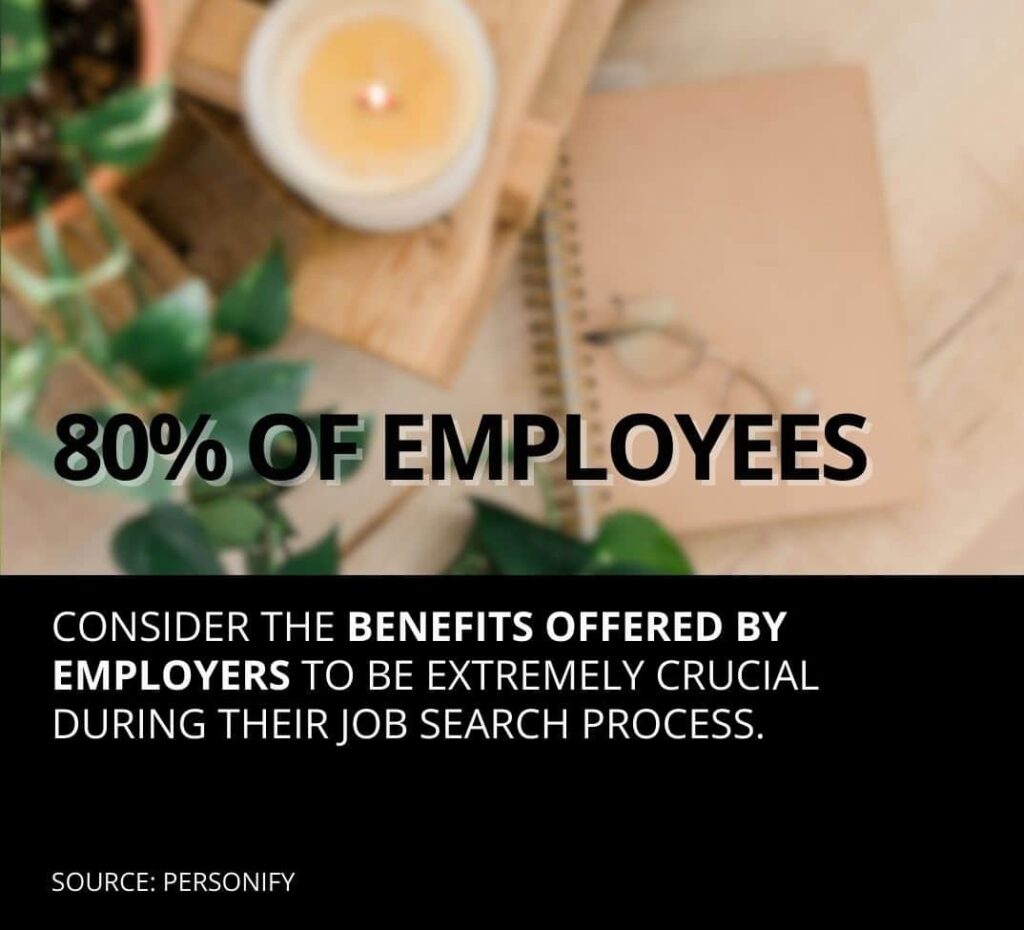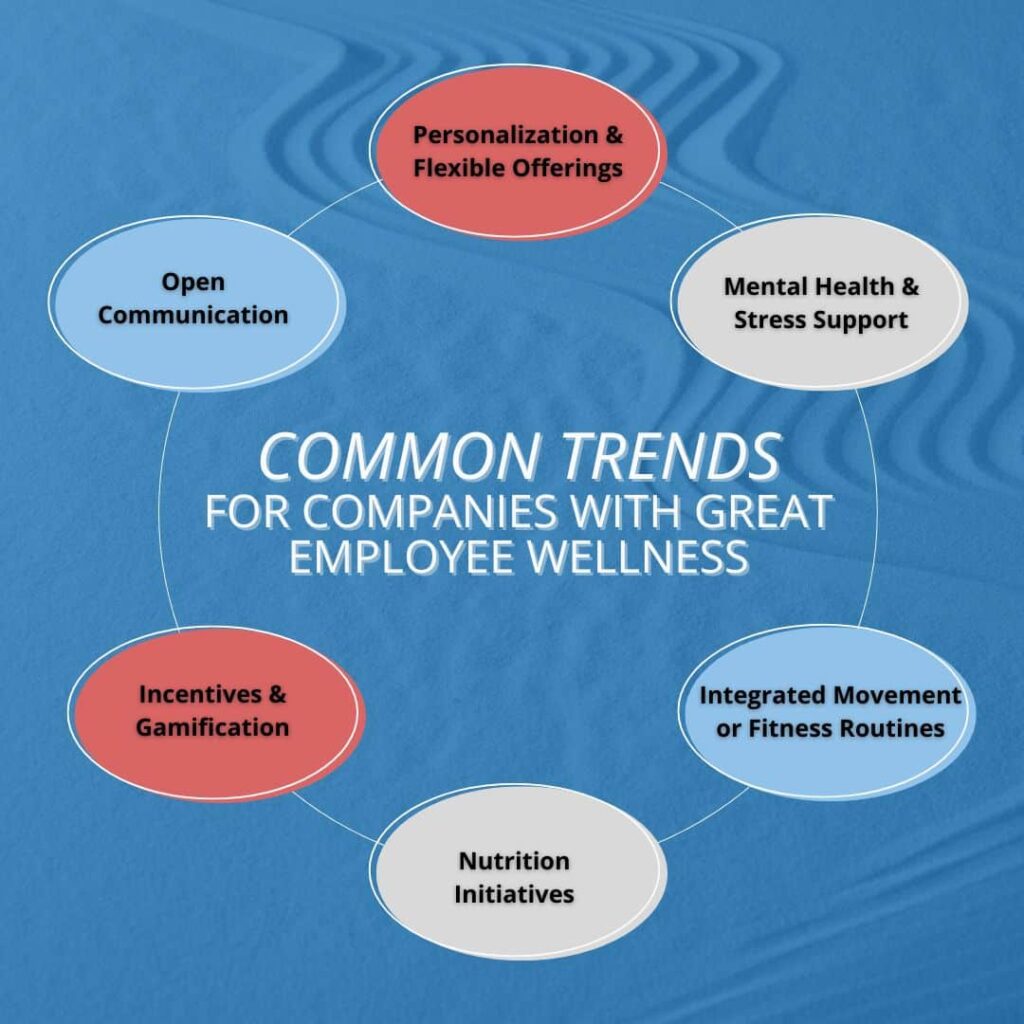More companies are making workplace wellness a priority, and it’s not just about offering gym memberships or the occasional step challenge. Businesses with the most effective corporate wellness programs focus on creating a culture that supports employee health in a meaningful way.
Employees who feel supported in their well-being are more engaged, productive, and likely to stay long-term—these are the most common trends in companies with strong corporate wellness programs.
Wellness: Approached From the Top
Companies leading in workplace wellness go beyond surface-level benefits, although 80% of employees consider the benefits offered by employers extremely crucial during their job search process.
They also integrate well-being into their culture, ensuring employees feel supported physically, mentally, and emotionally.
The most effective programs share a few key traits:
- Wellness is embedded in company values rather than treated as an extra perk. Leadership actively participates and encourages engagement.
- Programs focus on long-term health rather than short-term participation. Employees receive consistent support rather than temporary initiatives.
- Wellness offerings are diverse and inclusive, meeting the needs of a multigenerational workforce with different lifestyles, abilities, and preferences.
A strong wellness program isn’t just a checklist—it’s a strategic effort that improves workplace morale, retention, and overall productivity.

Common Trends in Companies With Strong Wellness
1. Personalization and Flexible Wellness Offerings
No two employees have the same wellness needs, which is why top companies offer personalized options instead of one-size-fits-all programs.
Flexible wellness initiatives help employees engage in ways that fit their lifestyle and schedules.
- Hybrid or remote-friendly wellness options, like virtual fitness classes or telehealth services
- Wellness stipends employees can use for gym memberships, fitness apps, or home workout equipment
- On-demand wellness content, including meditation sessions, stress management workshops, and health coaching
When employees have the freedom to choose what works for them, engagement and long-term participation increase.
2. Mental Health Support and Stress Management
Mental health is just as important as physical well-being, and companies with strong wellness programs provide real support for employees facing stress, burnout, or emotional challenges.
- Employee assistance programs (EAPs) offering confidential counseling services
- Stress reduction initiatives, including mindfulness workshops and guided meditation sessions
- Flexible work arrangements that promote work-life balance, reducing burnout and increasing job satisfaction
A workplace that prioritizes mental health fosters a positive environment where employees feel valued, leading to higher retention and stronger team morale.
3. Movement and Fitness Integrated Into the Workday
Instead of relying on employees to exercise outside of work hours, companies with top wellness programs create opportunities for movement throughout the day.
Small changes make a big difference in energy levels, focus, and overall health.
- Walking meetings that encourage movement while improving creativity and collaboration
- On-site fitness centers or discounted memberships to local gyms
- Incentives for daily movement, such as step challenges, wellness competitions, or activity-based rewards
Regular physical activity not only boosts employee health but also leads to higher productivity and fewer sick days.
4. Nutrition and Healthy Eating Initiatives
Food fuels performance, and companies prioritizing wellness make it easier for employees to make healthier choices throughout the workday.
Instead of processed snacks and sugar-loaded vending machines, they offer nutritious alternatives.
- Healthy snack stations stocked with fresh fruit, nuts, and whole foods
- Corporate cafeterias with nutritious meal options, making balanced eating more accessible
- Nutrition workshops or meal planning support to help employees make informed choices
When healthy eating is encouraged in the workplace, employees experience fewer energy crashes, improved focus, and better overall health.
5. Incentives and Gamification to Boost Engagement
One of the biggest challenges of corporate wellness is keeping employees engaged.
Companies with the most successful programs use incentives and gamification to create a fun, motivating experience.
- Reward systems where employees earn points for completing wellness activities
- Team-based challenges that foster camaraderie and friendly competition
- Financial incentives, such as reduced health insurance premiums for active participants
When wellness feels rewarding, employees are more likely to participate and stay committed long-term.

Other Ways to Support Workplace Wellness
Beyond structured programs, companies can take additional steps to create a healthier work environment.
- Encourage open communication about wellness needs through surveys and feedback channels
- Provide ergonomic office setups to reduce strain and improve posture
- Foster a culture that normalizes breaks and time off, preventing burnout and promoting sustainable productivity
Small adjustments make a big impact in creating a workplace where employees feel supported in their health and well-being.
When to Seek a Wellness Partner
Building a successful corporate wellness program takes time, strategy, and expertise.
Many companies partner with professional wellness providers to develop sustainable programs that fit their employees’ unique needs.
Working with a professional wellness company can help:
- Design custom wellness plans tailored to company culture and employee goals
- Offer corporate fitness training, health coaching, and team workshops
- Track engagement and adjust wellness programs to maximize long-term success
A professional partner ensures wellness efforts are effective, engaging, and built for lasting results.
Conclusion
The most successful corporate wellness programs are flexible, engaging, and designed for long-term impact. Companies investing in workplace wellness see benefits like higher productivity, reduced healthcare costs, and stronger employee retention.
For businesses looking to create a results-driven wellness program, Mile High Fitness can help. From customized corporate fitness training to tailored wellness solutions, our team works with businesses to build healthier, more energized workplaces.



